Electronic logging devices (ELDs) have changed how truck drivers track their hours on the road, replacing paper logs with digital records. For team drivers sharing the wheel, using ELDs comes with extra challenges that solo drivers don’t face.
Team drivers must follow the same Federal Motor Carrier Safety Administration (FMCSA) rules as everyone else, but they also need to handle driver switches and track each person’s driving time correctly. A good electronic logbook doesn’t just keep you legal – it helps you make the most of your time on the road.
Team drivers need elogs that make switching drivers simple, show each driver’s available hours clearly, and work without hassle during long trips. Using the wrong system can cause delays during driver changes, create wrong logs, or even lead to expensive tickets.
This guide covers what team drivers need to know about ELD requirements, common problems teams face, key features to look for, and how to use these systems well. We’ll also look at some of the best ELD for team drivers, including why many teams choose HOS247.
Do you have any questions? Talk to ELD Advisor: 650-405-3372 or Request Callback
Understanding ELD Rules for Team Drivers
The FMCSA requires most commercial truck drivers to use electronic logbooks to record their hours of service. This rule applies to both solo and team drivers, but teams have extra things to manage to stay compliant. Team drivers under ELD rules need to know the following:
- Each driver needs their own account. Every driver must have their own login information.
- Driver switches must be recorded correctly. The system must make changing drivers simple and accurate.
- Status must be logged properly. Both drivers need to record their status correctly (driving, on-duty not driving, off-duty, sleeper berth).
- Automatic driving detection. The ELD must automatically record when the truck is moving.
- Personal use tracking. The system should allow for personal use of the truck without counting against driving hours.
Team drivers could face closer inspection during roadside checks because there are more chances for logging mistakes. Violations can cost hundreds or thousands of dollars in fines, affect your CSA score, and in serious cases, get you put out of service.
A legal ELD must connect to your truck’s engine to automatically record driving time, location, miles driven, and engine hours. It should let drivers manually change duty status (when appropriate according to regulations), add notes for special situations, and show the last 14 days of logs during inspections.
For teams specifically, the electronic logbook should make driver switches quick and simple without losing connection or requiring complicated steps, keeping accurate records for each team member.
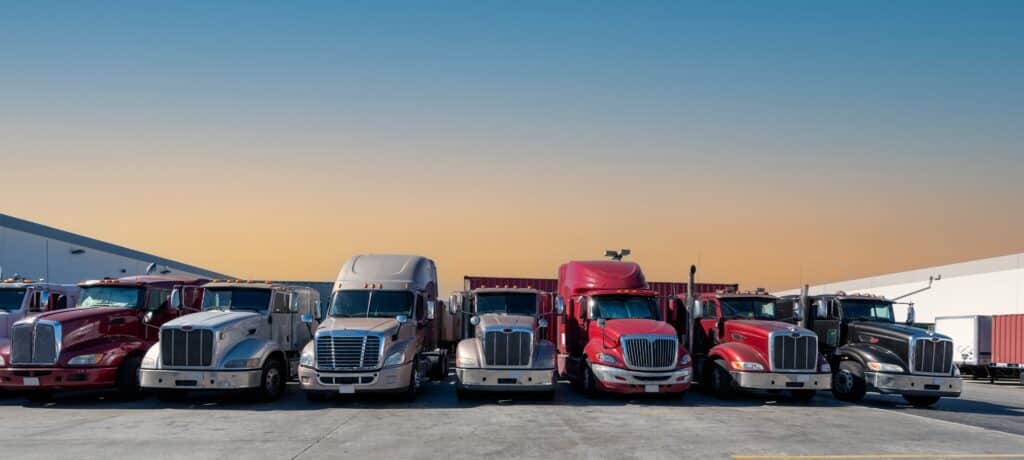
Key Challenges Team Drivers Face with ELDs
Team driving offers big advantages for long trips and tight delivery schedules, but it also creates special challenges with electronic logging. Knowing these challenges helps you pick the right ELD and avoid problems.
Driver handoffs are probably the biggest challenge for teams. When one driver finishes and another starts, this change must be recorded correctly in the ELD. Subpar systems can make this process complicated, with multiple steps that can lead to mistakes or forgotten status changes. During these switches, drivers might log the wrong status or forget to sign out, creating violations that could have been avoided.
Coordinating hours between team members is another major challenge. Team drivers need to plan their shifts to keep the truck moving while making sure both drivers get enough rest. Without elogs that clearly show both drivers’ available hours, teams might end up in situations where neither driver has enough time left to finish a delivery on schedule.
Managing personal conveyance (using the truck for personal reasons like getting food or going to a hotel) gets more complicated with teams. Drivers must log this time correctly to avoid counting it against their driving hours.
Technical problems make these challenges worse. When an ELD breaks down on the road, team drivers must fix the issue while keeping compliant logs for both drivers. This often means switching to paper logs temporarily while following proper procedures – twice as complicated with two drivers.
Finally, following different HOS rules across states or countries adds another layer of complexity. Teams crossing between the US and Canada or operating under different HOS and ELD rules for team drivers need systems that can handle these changing requirements without requiring a lot of manual adjustments.
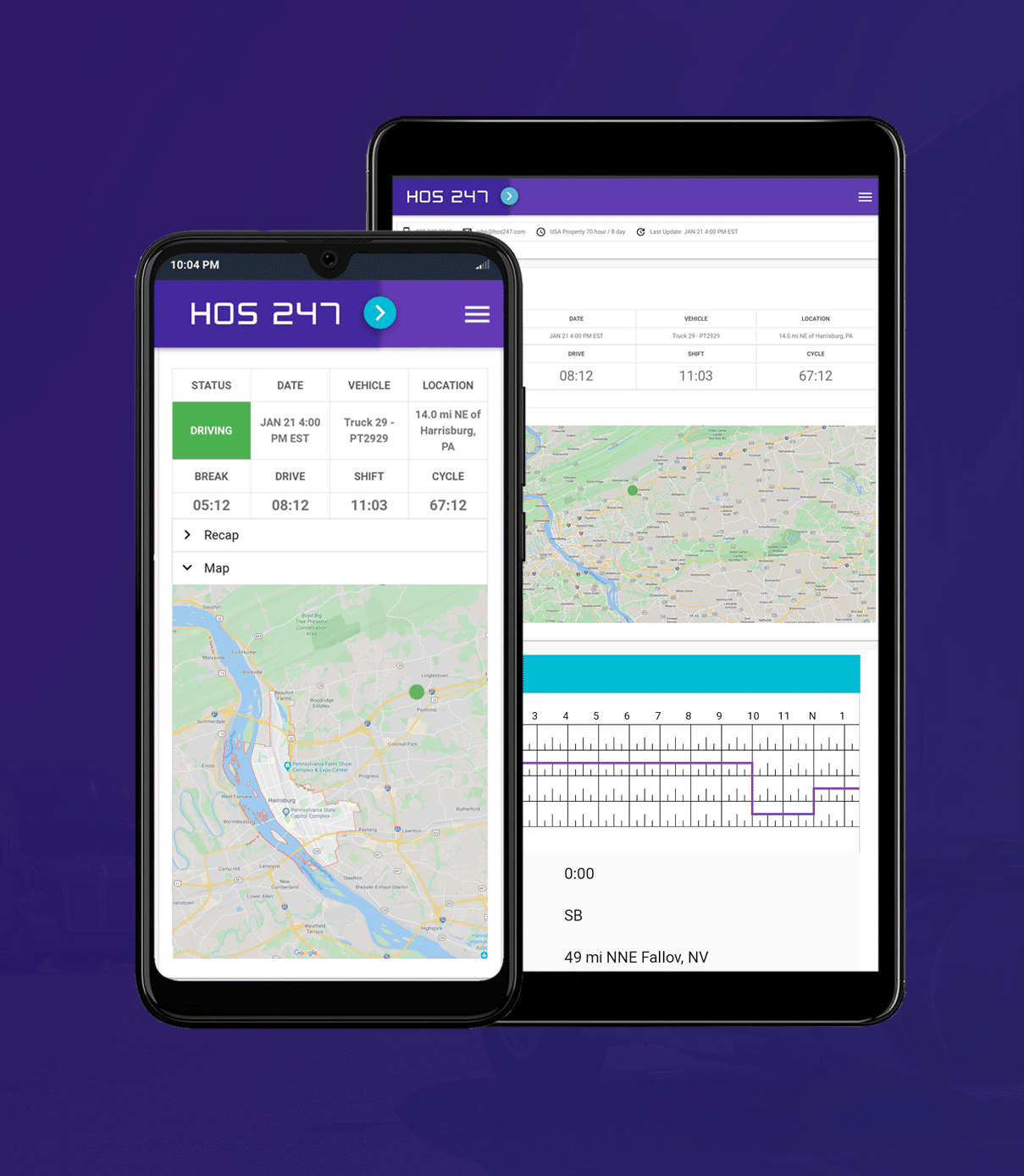
Essential Features to Look for in Team Driver ELD Solutions
When choosing an ELD for team operations, certain features are especially important for staying compliant and working efficiently. The right system can make team driving much simpler while reducing the risk of violations.
- Easy-to-use interface. Find elogs with simple driver switching that takes just a few taps, not complicated steps or menus.
- Team account management. Both drivers should be able to see their own hours and their partner’s status at the same time.
- Clear hours tracking. Good electronic logbooks show each driver’s available drive time, on-duty time, and required breaks on an easy-to-read display.
- Simple status changes. Look for features like sleeper berth splits and personal use options that don’t require being tech savvy.
- Helpful support. The best ELD companies offer effective support in multiple languages and are easily available to not waste your time.
- Tough hardware. Since team trucks rarely stop, your device needs to handle constant use without breaking down or losing connection.
- Works with other systems. ELDs that connect with dispatch software and GPS tracking can make your whole operation run smoother.
- Warning alerts. Good systems warn both drivers when you’re getting close to your time limits or when breaks are required.
- Offline mode. Systems that work when you’re out of cell coverage ensure you stay compliant in remote areas.
- Easy paperwork. Look for features that make inspections, log notes, and vehicle reports quick and simple between driver switches.
Choosing electronic logs with these team-focused features will make your job easier while keeping you legal, reducing stress for drivers and paperwork for fleet managers.
Best ELD for Team Drivers
For team drivers, not every electronic logbook gets the job done. Smooth co-driver switching, real-time visibility for both logs, and easy status updates are essential features that can’t be overlooked. The right electronic logging device should simplify team operations.
Here are some popular ELD options that offer features suited for team drivers:
| RANK | ELD PROVIDER | iOS APPSTORE | ANDROID PLAYSTORE |
|---|---|---|---|
| 1 | |||
| 2 | Motive | ||
| 3 | JJ Keller | ||
| 4 | BigRoad | ||
| 5 | Garmin |
When comparing user reviews, focus on how easily they handle driver transitions, how clearly they display each team member’s available hours, and the quality of customer support. Remember that the cheapest option isn’t always the best value – downtime and violations from a poor system will cost you more in the long run.
Most importantly, choose a provider that offers a trial period so your team can test the system before committing. This hands-on experience is the best way to determine if an ELD truly works for your team’s specific needs and driving patterns.
HOS247 ELD: Premium Solution for Team Drivers
HOS247 has become a top choice for team drivers seeking reliability and ease of use in their electronic logs. This system was designed with input from actual team drivers, addressing the specific challenges they face on the road.
The HOS247 system includes several features that make it especially valuable for team operations:
- Quick driver switching. Changing drivers takes just seconds with a simple interface that prevents mistakes during handoffs.
- Clear team visibility. Both drivers can see their available hours at a glance, making it easy to plan driver changes and coordinate schedules for maximum efficiency.
- Multilingual support. Our reps speak English, Spanish, Russian, and Polish, making it ideal for diverse driver teams who may prefer different languages. HOS247’s support team consistently receives high marks from drivers.
- Callback policy. We understand that time is money, so we will call you back immediately if the call drops so you do not have to explain your issue twice.
- No long-term contracts. Unlike many ELD providers that lock you into multi-year agreements, HOS247 offers no-contract options that let you pay month-to-month or yearly.
- Regular compliance updates. The system automatically updates to stay current with changing regulations, removing the worry about outdated rules or requirements.
- Durable hardware. The device connects reliably to the engine, maintaining a solid Bluetooth connection even during the constant use that comes with team operations.
HOS247 offers a two-week trial period, giving teams enough time to experience multiple driver switches and evaluate how well the system works for their specific operation before making a commitment.
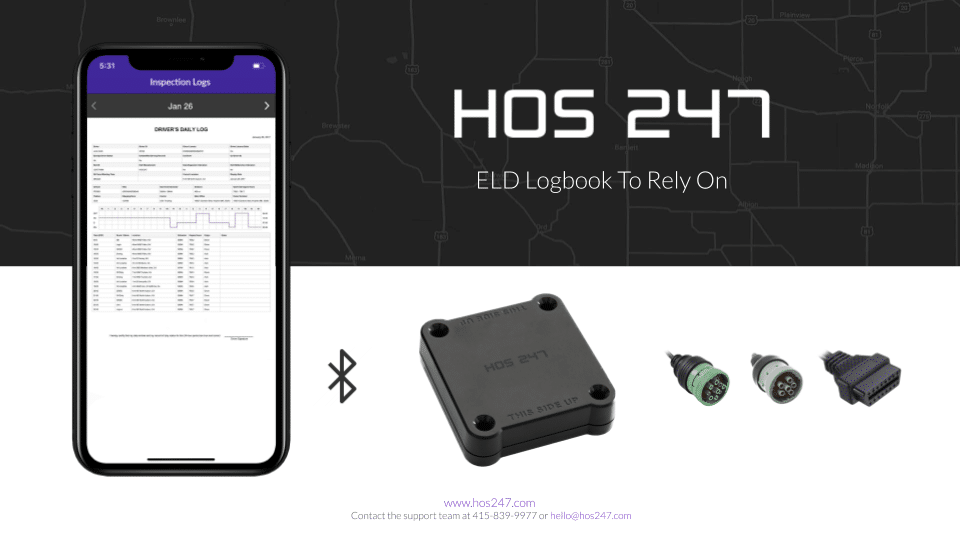
Best Practices for ELD Use in Team Driving Operations
Using ELDs effectively as a team requires good habits and clear procedures. These best practices will help you avoid violations and keep your operation running smoothly:
Create a Clear Handoff Routine
Both drivers should follow the same steps every time you switch. This includes the outgoing driver logging out completely, the incoming driver confirming their status, and both checking that the change was recorded correctly. A simple checklist can prevent mistakes during these transitions.
Document Everything Important
When unusual situations happen—like loading delays, road closures, or elog problems—add detailed notes to your logs. These notes protect you during inspections and audits.
Double-Check Your Status Entries
Take a quick look at the app screen after each status change, especially after personal conveyance, yard moves, or crossing time zones. This simple habit prevents many common violations.
Keep Training Current
Even experienced drivers benefit from refresher training. Set aside time every few months to review any recent violations, practice handling unusual situations, learn about new features or updates, and share tips between team members.
Communicate Between Co-Drivers
Before each shift change, take five minutes to brief your partner on current road conditions, upcoming delivery challenges, your current hours situation, and any issues with the truck or equipment. This quick chat helps the incoming driver plan their shift better.
Manage Fatigue Strategically
Use team driving’s flexibility to your advantage. Schedule breaks during high-traffic periods and drive during clearer conditions. Plan for the more experienced driver to handle challenging sections and adjust sleeping schedules to match your route’s demands.
Always Have a Backup Plan
Keep paper logs readily available. All team drivers should know how to properly complete them and understand the procedures for documenting ELD malfunctions.
How to Implement a New ELD System for Your Team
Switching to a new electronic logging system doesn’t have to be difficult if you follow a clear plan. Here’s how to make the transition smooth for your team:
- Research and select the right ELD that addresses team driving needs. Focus on ease of use during driver switches, clear displays of both drivers’ hours, and quality customer support. Request demos from at least three providers and ask specific questions about team functions.
- Plan your implementation timeline carefully. Avoid switching systems during your busiest season or while handling your most demanding routes. Many teams find that implementing during a slightly slower period gives them breathing room to work through any issues.
- Set up a test phase with just one truck before rolling out to your entire fleet. This allows you to identify and solve problems without affecting all your operations. Choose experienced drivers for this test who can provide detailed feedback.
- Create simple training materials specific to your operation. While ELD providers offer general training, you’ll want custom guides that address your specific routes, common customer locations, and typical team scenarios. Short checklists often work better than lengthy manuals.
- Schedule hands-on training sessions where drivers can practice using the actual devices. Focus especially on driver switching procedures, dealing with roadside inspection scenarios, and troubleshooting basic issues. Role-playing these situations helps build confidence.
- Prepare for transition challenges by having extra support available during the first few weeks. Consider having tech-savvy drivers serve as internal experts who can help others when questions arise. Keep your provider’s support number posted clearly in all trucks.
- Collect regular feedback from your teams about what’s working and what’s causing problems. Address issues quickly and share solutions with all drivers.
- Schedule follow-up training after the first month to address any recurring issues and reinforce best practices.
Remember that perfecting your ELD procedures takes time. Stay positive and focus on the long-term benefits of a system that works well for your team.
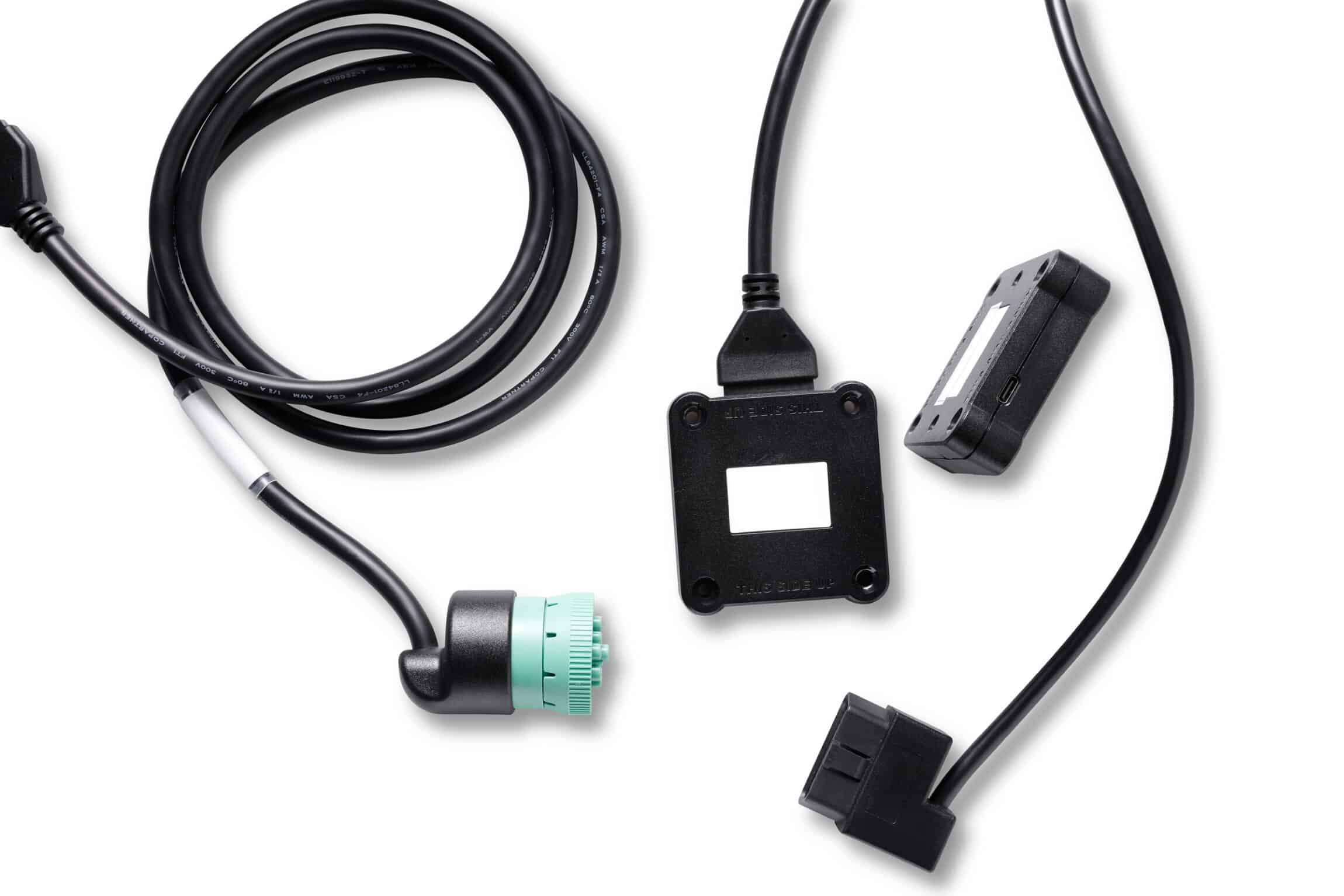
Conclusion
Team drivers face unique challenges that solo drivers don’t have to worry about. From coordinating driver switches to managing available hours between partners, these complexities require an electronic logbook that makes compliance easy for them.
The right logbook doesn’t just keep you compliant, it helps maximize your team’s efficiency, reduces stress during driver transitions, and ultimately contributes to safer, more productive operations. If your current system is falling short, now might be the perfect time to upgrade to a solution that better serves your team driving needs.
HOS247 and other quality providers offer solutions that address the specific needs of team drivers. Whatever system you choose, take advantage of trial periods to ensure it truly works for your operation before making a long-term commitment. The road is challenging enough. Your ELD should make your job easier, not harder.

As an expert in B2B and B2C sales, I’ve dedicated myself to perfecting sales processes and client retention strategies in the logistics and trucking industry. I have significantly contributed to the expansion of the ELD service, catering to retail and wholesale clients in need of HOS247 ELD solutions. My unwavering commitment to implementing state-of-the-art sales techniques and technologies ensures the continuous growth and success of businesses I work with.











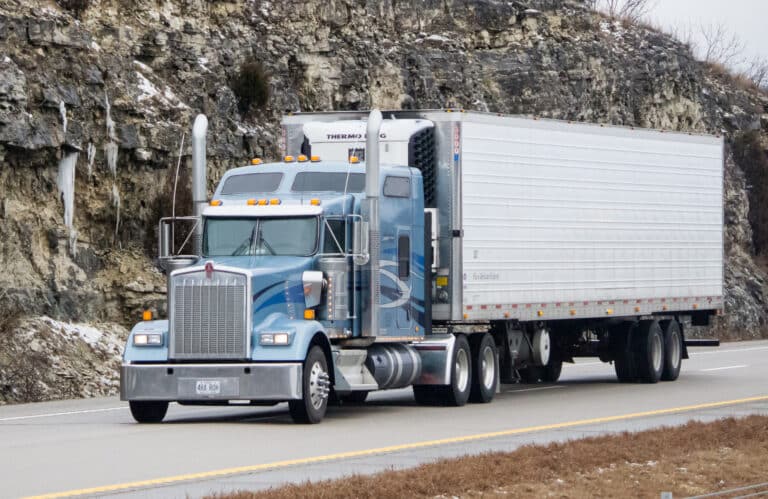
Modern trucking businesses rely on electronic logbook devices to manage their HOS as required by federal law. These tools are essential to ensuring compliance and overall safety on the road. While some truckers are still allowed to use paper logs,

In today’s highly competitive trucking industry, fleet managers face numerous challenges in ensuring the efficiency, safety, and profitability of their operations. One of the most effective tools for addressing these challenges is GPS fleet tracking technology. By providing real-time visibility

Staying on top of hours of service (HOS) rules is crucial for truckers and fleet managers. These regulations are designed to keep roads safe and drivers healthy by preventing fatigue-related accidents. However, keeping accurate track of driving time and rest